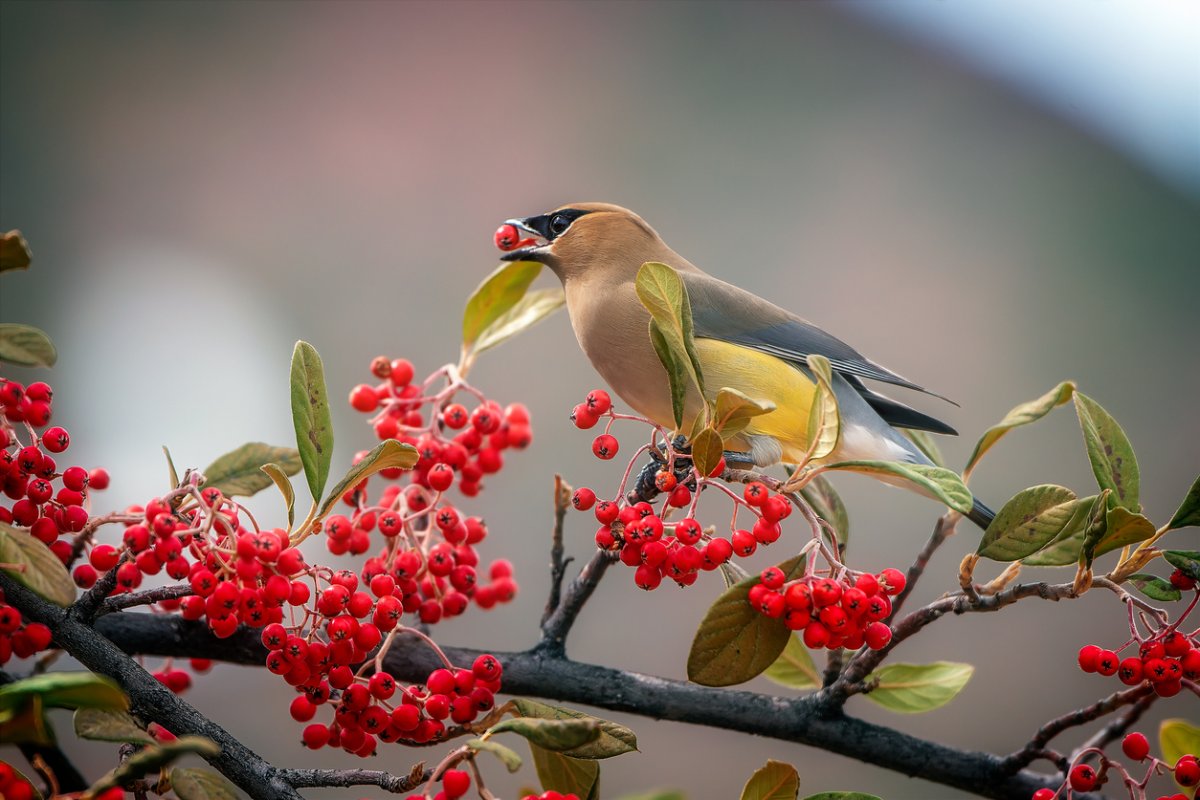We may earn revenue from the products available on this page and participate in affiliate programs. Learn More ›
It’s said we are what we eat. For some birds, what they eat colors their appearance. Most birds with red, orange, or yellow pigmentation in their feathers get those colors from carotenoids in their diets.
The color of a bird is either structural—microscopic surfaces that manipulate light and color—or chemical. Chemical color relies on pigments. Of the four types of pigments found in feathers, melanins and carotenoids are the most common, while porphyrins and psittacins are rarer. Carotenoids are pigments that create the yellow, orange, and red hues in fruits, vegetables, and flowers. You’ve probably heard of beta-carotene, the carotenoid that gives carrots their bright hue. Animals can only get carotenoids from their diet, so feeding certain birds carotenoid-rich foods will produce colorful feathers.
Cardinals

Cardinals eat foods rich in carotenoids, including berries, raspberries, apples, and wild grapes. Non-migratory, these bright red birds stick around their primarily eastern-U.S. territories all winter.
If cardinals eat food with a lower amount of carotenoids, their color fades. Female cardinals choose mates with bright red feathers because it’s an indication that the males are healthy, have access to a large territory with good food, and will be able to provide nutritious food to their young.
RELATED: 12 Fun Facts You Never Knew About Cardinals
American Goldfinches
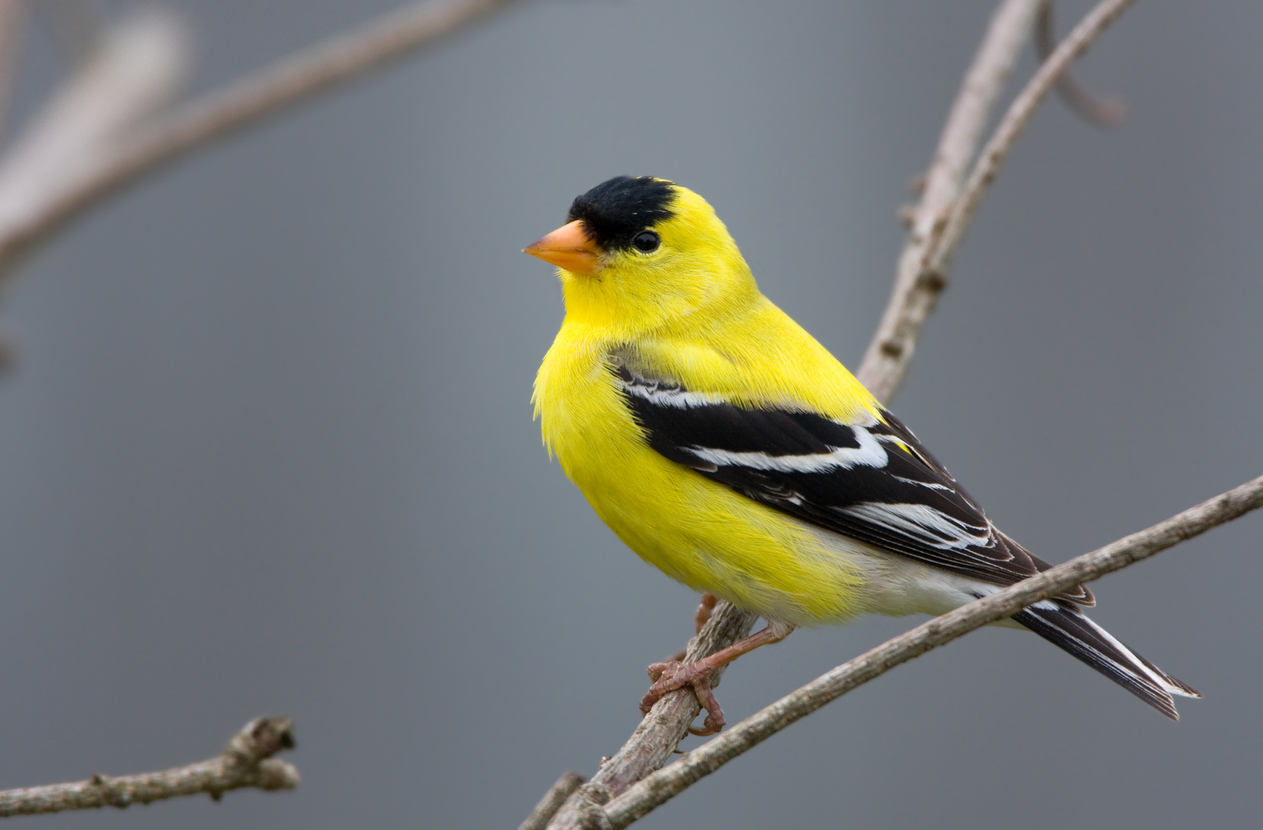
Male goldfinches turn bright yellow in spring and summer due to the availability of the carotenoid-rich seeds they eat. This small, non-migratory bird from the northeastern United States feasts primarily on seeds from the daisy/sunflower family, but also enjoys: lettuce, chrysanthemums, asters, dandelions, goldenrod, coneflowers, artichokes, dahlias, marigolds, zinnias, chamomile, chicory, sage, tarragon, ragweed, sagebrush, and yarrow.
RELATED: 12 Ways to Be a Good Neighbor—to Your Backyard Wildlife
Cedar Waxwings
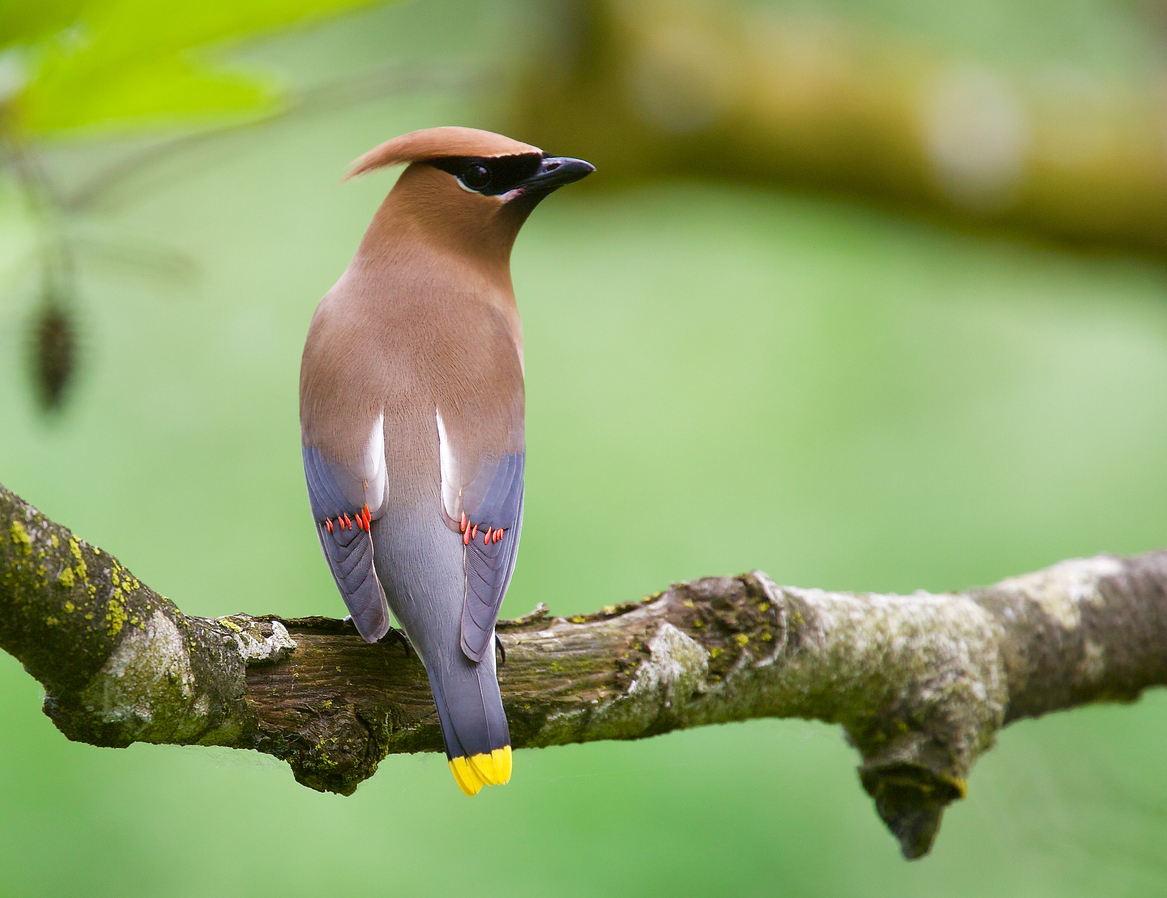
Small songbirds with a distinctive black “mask” and smooth dove-gray feathers, the Cedar waxwing is native to North America. These sleek little birds have tails tipped in yellow, orange, or red, depending on their diet. Their favorite foods include sugary red fruits and berries, including strawberries, raspberries, mulberries, blueberries, holly berries, honeysuckle berries, juniper, and dogwood. They’re named after their favorite food: cedar berries.
RELATED: The Best Birdseed
House Finches
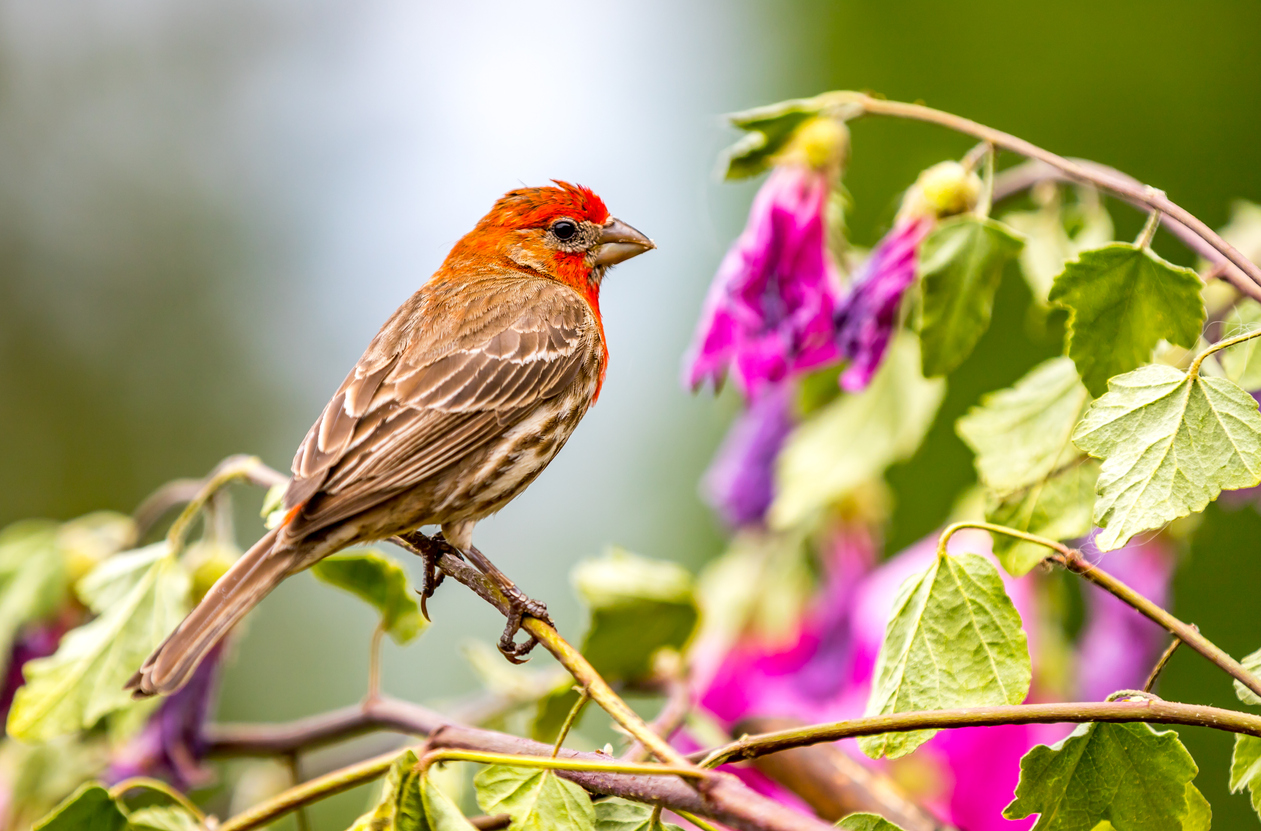
House Finches are small birds with coloring affected by what they eat. Males have red, orange, or even yellow feathers on their rump, breast, and head. They eat vegetables, fruit, seeds with high oil content, berries, small flowers, and insects and will gladly partake of backyard bird feeders, especially in winter. Some house finches migrate during the winter; others stay where they will build early spring nests. They also appreciate the sugar water in hummingbird feeders.
RELATED: 9 Ways to Keep Backyard Birds Healthy and Well Fed This Winter
Hummingbirds
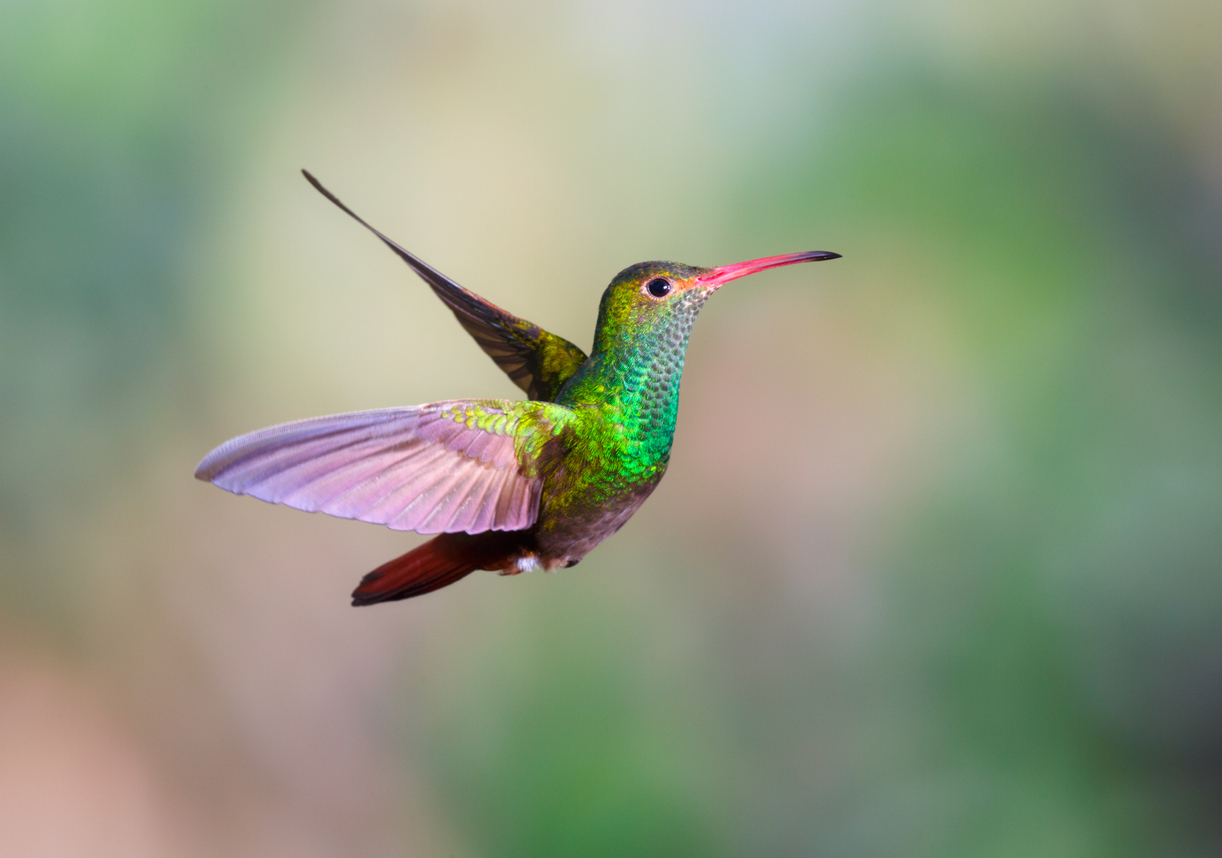
While the bold, iridescent colors on a hummingbird don’t come directly from their diet, what they eat influences how bright and shiny they’ll be. These tiniest of birds eat lots of sugary flower nectar and plenty of protein in the form of insects. They need plenty of both for their migration to Mexico and beyond for the winter. Place hummingbird feeders in protected areas and plant native red or orange tubular flowers such as honeysuckle, bee balm, and hummingbird sage to help them on their way.
RELATED: 23 Types of Hummingbirds All Backyard Birdwatchers Should Know
Flamingos

Coastal homes that back up to the water may host these showy birds in the yard. Flamingos get their vibrant pink coloring from a diet of brine shrimp and other flora and fauna found in the shallow, brackish water they inhabit. Brine shrimp eat microscopic algae containing carotenoids. When these Floridians eat algae, brine shrimp, and brine fly larvae, their bodies metabolize the carotenoids, which makes their feathers look pink. Without that key ingredient with the right pigment, flamingos would appear grayish.

